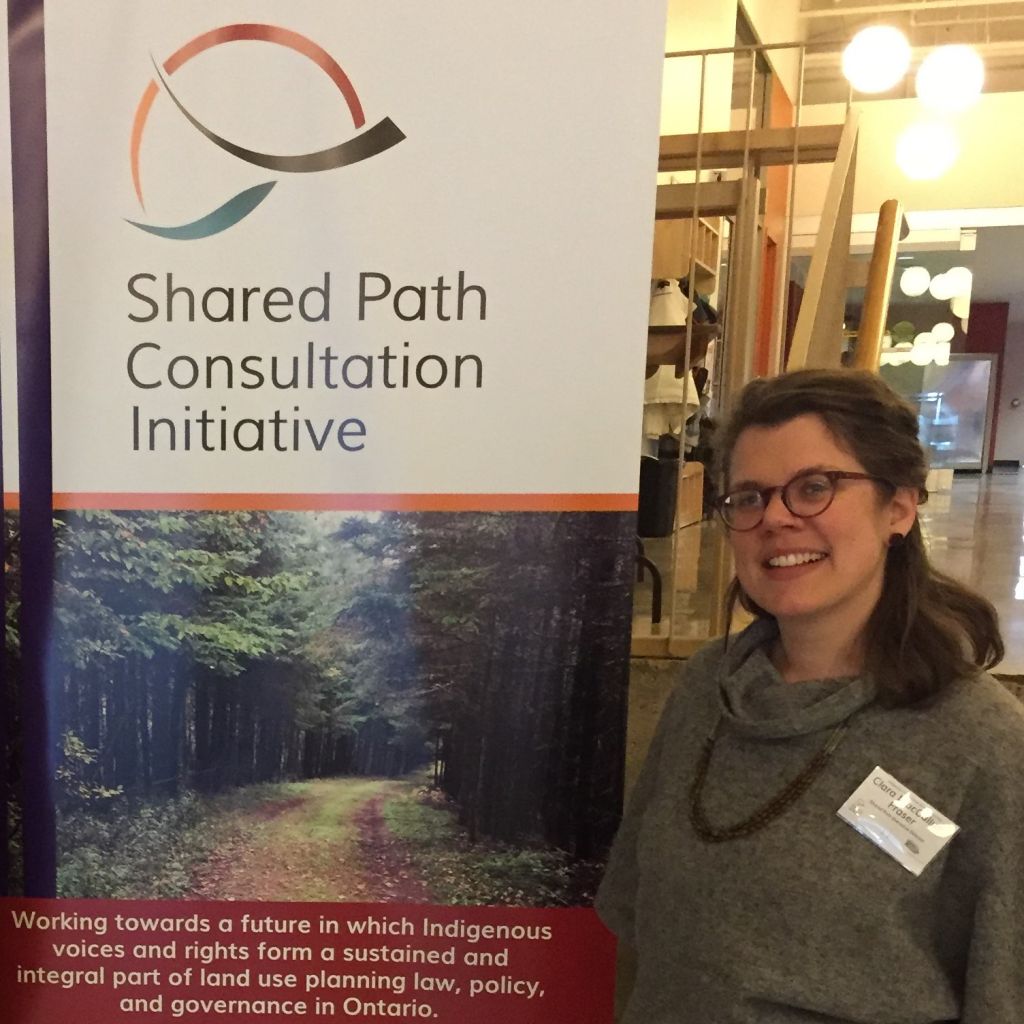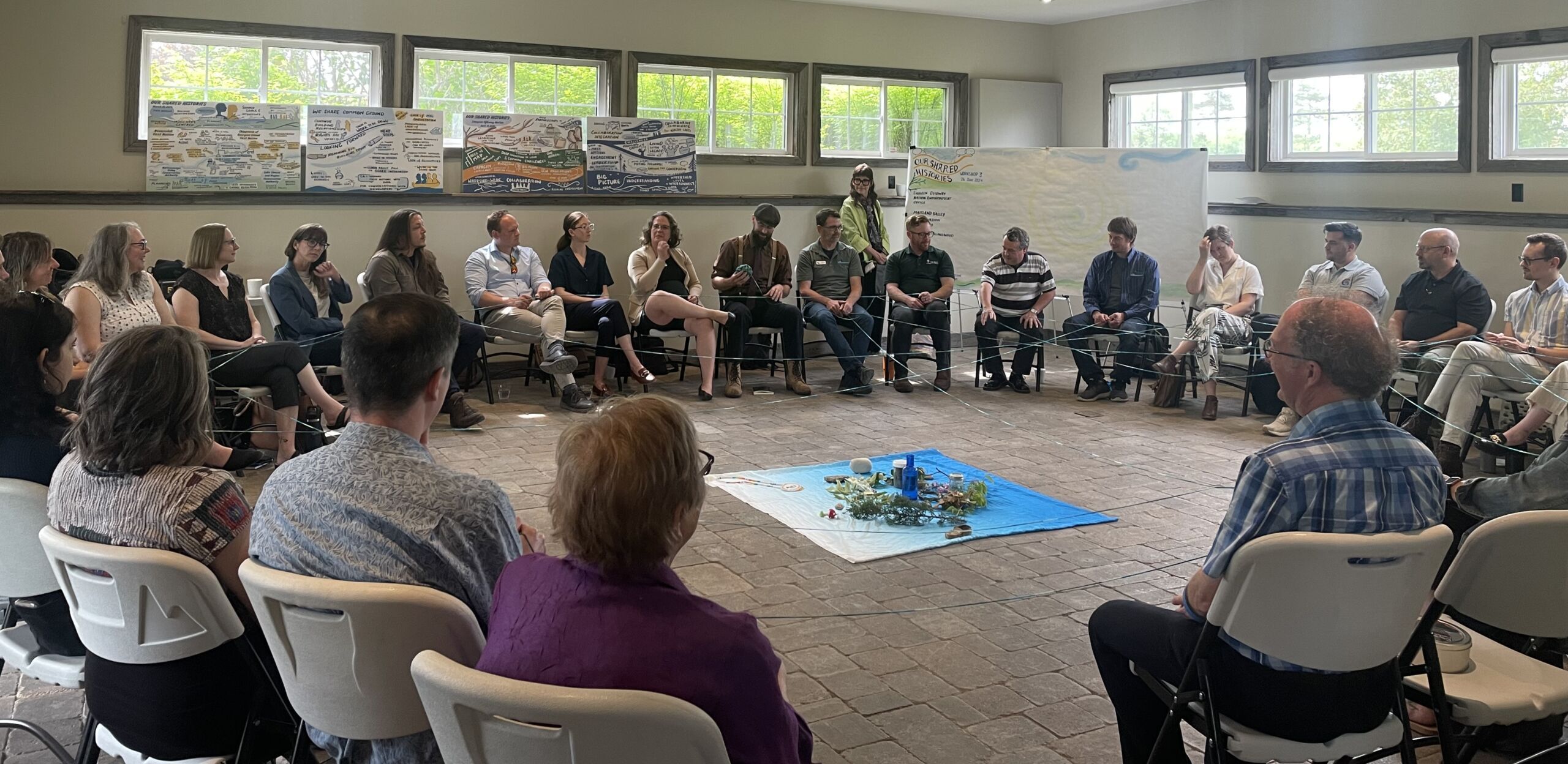A Message From Our Executive Director
Written by Admin, Admin •
As we warm our way into Spring 2020, we find ourselves in strange times. The Covid-19 pandemic has changed our world profoundly, in ways that have yet to be made clear. As we hunker down in our homes doing our part to “flatten the curve”, we are slowly getting used to this uncertainty and learning to make do with new ways of communicating. Getting used to uncertainty isn’t new to many of us working within the realm of land use planning and Aboriginal and treaty rights, however.
Stumbling Into the Grey Area
Years ago, while I was studying for a Masters of Planning at Ryerson University’s School of Urban and Regional Planning, a Planning Law class assignment sent me stumbling into the grey area that is the municipal role within the realm of the duty to consult and accommodate (into my very first panic attack). I had elected to conduct a site assessment for a site on Moose Deer Point First Nation, where the community had built a water treatment plant, as I was curious to know about the zoning policies on a First Nation reserve. After days of trying to figure out why I couldn’t see what the policy layers on the reserve were, I realised the night before the assignment was due that, because this was federal land, the mapping software (which was tied to provincial policies) would be of no help. Thus ensued the panic attack as I scrambled to do the assignment focused on another site, with only a few hours left to go. Once I managed to scrape by with barely a pass on the assignment, I sat back and began to reflect on what I had just encountered. Imagining that I was a planner in a municipality local to that First Nation, if I had been interested in learning about the planning rules in that area, I would have no clear way of doing so, and the tools at my disposal would literally tell me that there was “no information available”.
This grey area – it was quite literally grey on the map, instead of the pinks of residential, greens of parkland, reds of mixed-use – is what SPCI Board Chair Carolyn King calls jurisdictional opportunity. As a result, municipalities can make decisions such as placing a garbage dump within an inappropriate proximity to an Indigenous community, because they simply don’t have the information that would tell them to do otherwise, and there remain problematic levels of disconnect between Indigenous and municipal/regional communities that lead to poor planning outcomes
The Emergence of a Shared Path
It has been many years since that Planning Law class-induced panic attack, when I first learned of the trilogy of cases around the duty to consult and accommodate (Haida, Taku River, and Mikisew Cree). Since then, and in collaboration with a multi-disciplinary network of practitioners and academics, the Shared Path Consultation Initiative has emerged as a charitable organisation dedicated to addressing issues (challenges and opportunities) that emerge where land use planning and Aboriginal and treaty rights intersect. We are doing this by focusing on bridge-building and figuring out how to provide supports for those engaged in work at this very intersection, whether from an Indigenous nation or from within the non-Indigenous world of land-based practice.
The Shared Path is governed by a Board of Directors that was established from within the beginnings of our network, after a two-day round table that took place in 2015. This round table determined the initial mandate for an organisation to do this work, locating itself at the intersection of land-based practice (starting with planning and consultation, but expanding to mapping, archaeology, and beyond) and Aboriginal and treaty rights. This Indigenous and non-Indigenous Board of Directors is comprised of established and emerging leaders in their fields. Collectively, it provides a wellspring of knowledge to lead the organisation. Over the coming year, you’ll get to know these wonderful people through blog posts and at our AGM in the fall – in the meantime, learn about them and their work by visiting their member profiles within our members portal.
The Journey Ahead
This journey that we are on as an organisation – a journey of leaning into the challenge of addressing the historical and ongoing impacts of colonialism, and examining the implications and possibilities for how we as a society learn to share on and in the lands and waters that have sustained us – is also a personal journey. I invite each one of you to lean into the unsettling moments as your learning reveals uncomfortable truths, and to get comfortable with the unsettling questions as your professional perspective expands to grapple with fundamentally different points of view and philosophies. I invite you to become a member of the Shared Path membership network, and join us along this multifaceted journey along the path of truth and reconciliation
As we launch this website, I am on another journey, taking maternity leave for a year. I wish you all the very best for the coming year, and I look forward to my return in the spring of 2021, and to seeing how the Shared Path and its network community grow over the coming year




